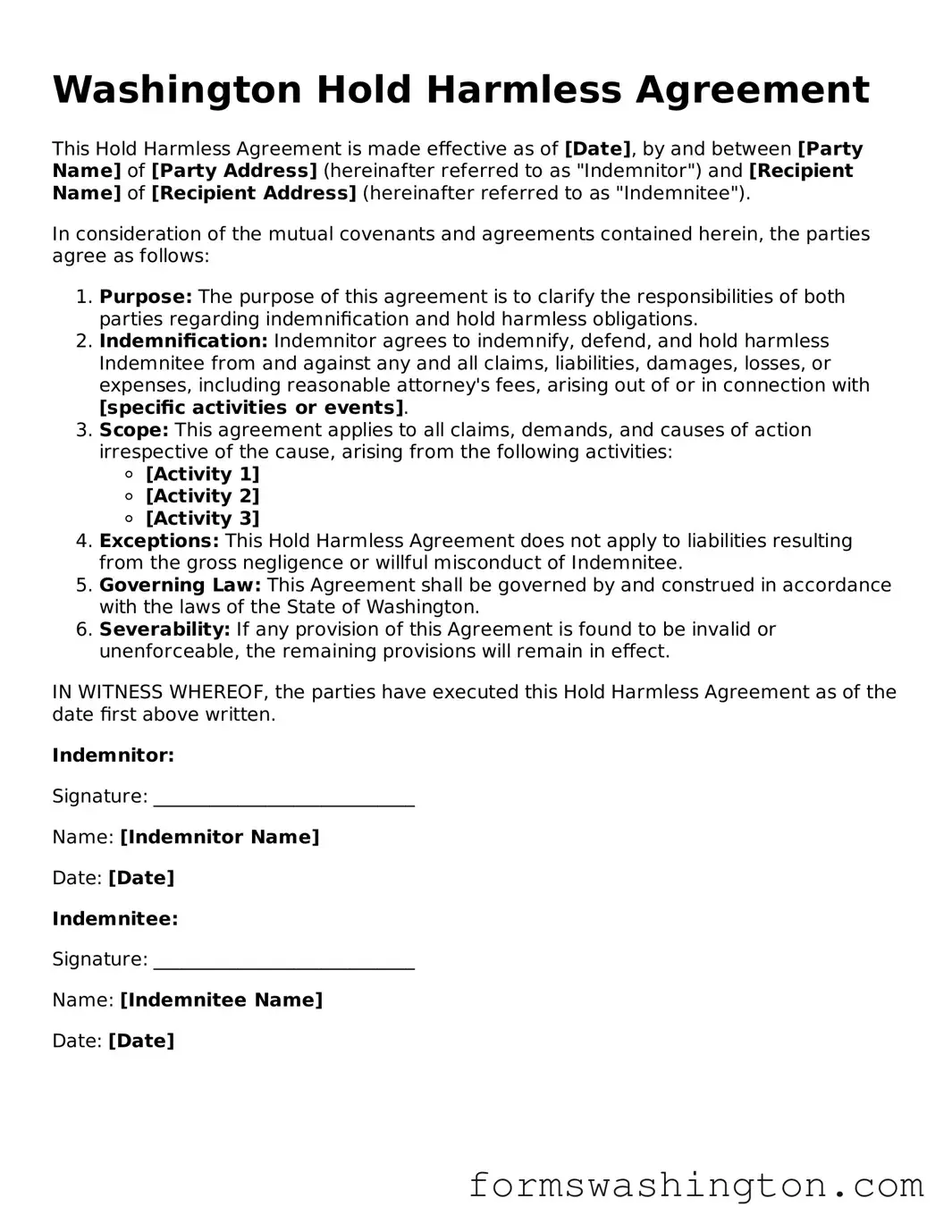Blank Hold Harmless Agreement Template for Washington State
The Washington Hold Harmless Agreement is a legal document that protects one party from liability for any damages or injuries that may occur during a specific activity or event. This agreement is commonly used in various situations, such as rentals, events, or construction projects. By signing this form, participants acknowledge the risks involved and agree not to hold the other party responsible for any potential claims.
Open Editor Here
